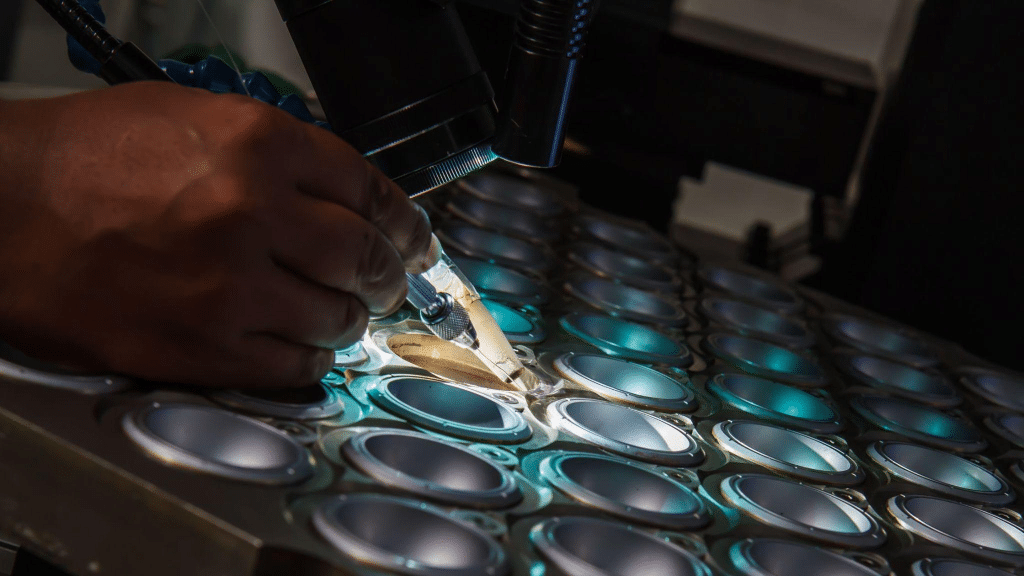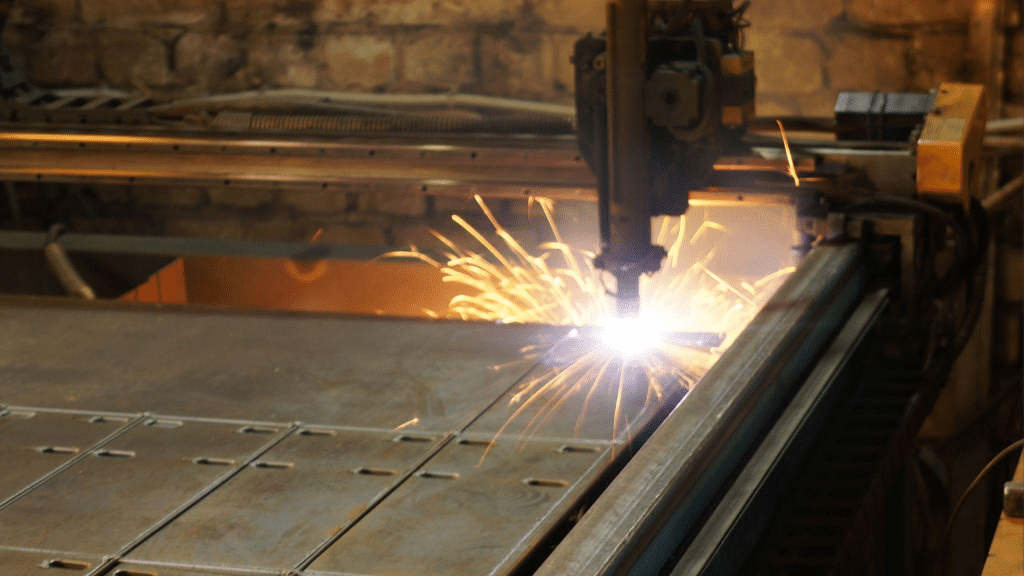Introduction

The demand for laser welding has been steadily rising in recent years, with many manufacturers recognizing it as one of the most advanced and efficient welding solutions available. However, despite its precision and speed, laser welding isn’t without challenges. Weld pools remain susceptible to oxidation, contamination, and thermal distortion, which can compromise the integrity of the final product.
To maintain weld quality, a protective barrier known as shielding gas is essential. This gas prevents impurities from affecting the molten metal, ensuring clean, durable welds with minimal defects.
In this article, we’ll explore the role of shielding gas in laser welding, its importance in protecting weld pools, and how to select the right type for your specific welding projects.
What is Shielding Gas in Laser Welding?
A shielding gas, also known as cover gas, is a gaseous substance used in laser or gas metal arc welding that protects the weld pool and its surrounding area from contamination and oxidation.
This gas isolates the weld’s air from the external air to prevent any interaction that may distort the weld’s quality. It forms a protective barrier around the weld area that blocks all unwanted gases and dust from the atmosphere until the molten metal solidifies. As a result, all external contaminants are displaced, the arc remains stable, defects are prevented, and porosity is minimized.
Moreover, the shielding gas prevents plasma formation. Plasma or ionized clouds of gases can distort the laser beam and affect the weld quality, so keeping them at a minimum is essential.
Assist Gas vs. Shielding Gas
Unlike shielding gas, assist gas lacks the protective ability to safeguard the weld area from contamination. It only aids in the removal of molten material and enhances cut quality by inducing a chemical reaction.
Therefore, to protect the weld from oxidation or contamination, shielding gas is necessary, not assist gas.
Common Types of Shielding Gases for Laser Welding

Shielding gases have varying psychochemical properties with different influences on the weld quality. Enumerated below are the commonly used shielding gases for laser welding:
Argon (Ar)
Argon is a low-cost shielding gas that is commonly used for sinking above the weld pool due to its high density. However, Argon’s ionization energy is considerably low and cannot sustain the high ionization of the laser beam. For this reason, Argon usually poorly controls plasma formation in the weld.
Argon is widely used with Aluminum, Stainless Steel, and Titanium materials and is considered a conventional shielding gas in laser welding.
Helium (He)
Helium has high ionization energy and superior heat transfer than Argon. Under a laser beam, Helium’s ionization becomes lower, which helps it in controlling plasma formation. It’s also chemically non-reactive to most metals, so it ensures minimal chemical reaction and oxidation.
Unfortunately, Helium is expensive, so it’s rarely used in mass production lines. It’s more common in scientific or research endeavors that utilize laser welding.
Nitrogen (N2)
Nitrogen’s ionization energy sits between the ionization of Helium and Argon, so it offers moderate ionization energy under laser. Compared to Helium, Nitrogen works well in suppressing plasma formation.
Nitrogen is also cheap and compatible with most high-powered and low-powered lasers, so it’s also considered a conventional shielding gas for laser welding.
Mixed Gases (Ar-He, Ar-N₂)
Some manufacturers use multiple shielding gases for maximum protection against contamination. For instance, Argon and Nitrogen mix well as Nitrogen enhances the Argon’s plasma formation suppressive capacity.
Moreover, certain welds require specific bead appearance and penetration depth, and only mixed gases can help in achieving these requirements.
How to Choose the Right Shielding Gas for Your Laser Welding Needs?
The role of shielding gases is integral to weld quality. Hence, choosing the right shielding gas that meets your welding needs is imperative.
Consider the factors below:
- Metal Type Compatibility: Check the material types you have and ensure that the shielding gas is compatible with them. For instance, if you have carbon, aluminum, titanium, copper, or stainless steel materials, Argon or Nitrogen are usually compatible with them.
- Welding Penetration and Speed: Assess how the shielding gas can influence weld penetration and speed. For instance, Helium is highly effective for deep and fast welding penetration.
- Cost vs. Performance: Most cost-effective gases, like Argon, work decently for common materials. However, firms might need to invest in premium ones if the weld integrity is highly crucial, such as in the aerospace or automotive industries.
Whatever shielding gas you end up with, pick a high-performing laser welding machine that meets your welding needs. Choose one with strong output, conserve energy efficiently, and manage temperature at a safe range.
Denaliweld’s Air Cooled Laser Welding Machine comes with a 976nm technology laser pump and state-of-the-art software designed to maintain optimal output. It also features great adaptability with all conventional shielding gases.
Embed: 2025 Jet 2000 Laser Welding Machine by Denaliweld | Assembled in the USA
Shielding Gas Flow Rate: How Much Do You Need?
The right shielding gas flow rate is crucial for ensuring high-quality laser welds. Too much gas can create turbulence, leading to contamination or defects in the weld. Too little gas may expose the weld pool to oxidation, weakening the final product.
To optimize gas usage and welding efficiency, here are the recommended flow rates for common shielding gases:
- Helium: 20–40 liters per minute – Ideal for deep penetration and high-speed welding, especially on reflective metals like aluminum and copper.
- Argon: 12–25 liters per minute – Provides stable arc characteristics and is commonly used for precision welding on stainless steel and mild steel.
- Nitrogen: 15–25 liters per minute – Enhances corrosion resistance and is often used for welding stainless steel and reactive metals.
- Helium + Argon: 20–35 liters per minute – A balanced mix that improves arc stability while offering deeper penetration.
The optimal flow rate also depends on nozzle size, welding speed, and the material being welded. To prevent gas waste and ensure weld quality, constantly adjust the flow rate according to your project’s needs and monitor gas coverage during welding.
Achieve Top-Level Laser Weld Quality With the Correct Shielding Gas
For flawless laser welds, choose a shielding gas that matches your material, adjust flow rates to prevent defects, and ensure even coverage. Helium boosts penetration, argon stabilizes arcs, and nitrogen enhances corrosion resistance. Proper gas selection and control lead to cleaner, stronger welds with lasting durability.
For high-quality laser welding solutions, visit Denaliweld, a world-class supplier of laser welding machines. Developed by esteemed engineers and designers in the laser industry, we feature multiple innovative machine patents that elevate the quality of laser welding with unmatched precision at reasonable costs.



